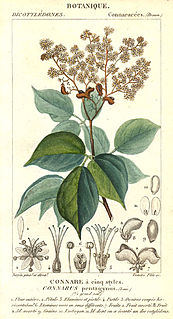
The Anacardiaceae, commonly known as the cashew family or sumac family, are a family of flowering plants, including about 83 genera with about 860 known species. Members of the Anacardiaceae bear fruits that are drupes and in some cases produce urushiol, an irritant. The Anacardiaceae include numerous genera, several of which are economically important, notably cashew, mango, poison ivy, sumac, smoke tree, marula, yellow mombin, Peruvian pepper and cuachalalate. The genus Pistacia is now included, but was previously placed in its own family, the Pistaciaceae.
This is a list of minor planets which have been officially named by the Minor Planet Center (MPC). The list consists of partial pages, each covering a number range of 1000 bodies citing the source after each minor planet was named for. An overview of all existing partial pages is given in section § Index.
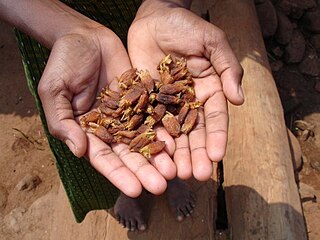
Non-timber forest products (NTFPs), also known as non-wood forest products (NWFPs),minor forest produce, special, minor, alternative and secondary forest products, are useful substances, materials and/or commodities obtained from forests which do not require harvesting (logging) trees. They include game animals, fur-bearers, nuts, seeds, berries, mushrooms, oils, foliage, pollarding, medicinal plants, peat, mast, fuelwood, fish, spices, and forage.
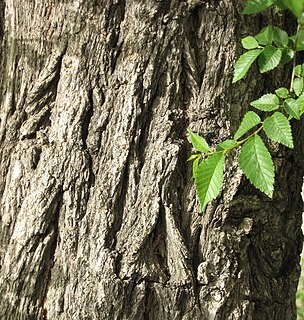
Ulmus canescensMelville is a small deciduous tree occasionally known by the common names grey elm, grey-leafed elm, and hoary elm. Its natural range extends through the lands of the central and eastern Mediterranean, from southern Italy, the islands of Sicily, Malta, Crete, Rhodes and Cyprus, to Turkey, and as far south as Israel, where it is now considered rare and endangered in the wild. The tree is typically found amidst the comparatively humid coastal woodlands and scrublands.

The Field Elm cultivar Ulmus minor 'Umbraculifera' [:shade-giving] was originally cultivated in Iran, where it was widely planted as an ornamental and occasionally grew to a great size, being known there as 'Nalband' Persian: نعلبند [:the tree of the farriers]. Litvinov considered it a cultivar of a wild elm with a dense crown that he called U. densa, from the mountains of Turkestan, Ferghana, and Aksu. Non-rounded forms of 'Umbraculifera' are also found in Isfahan Province, Iran. Zielińksi in Flora Iranica considered it an U. minor cultivar.
The Field Elm cultivar Ulmus minor 'Cucullata', the Hooded elm, was listed by Loddiges in the catalogue of 1823 as Ulmus campestris cucullata, and later by Loudon in Arboretum et Fruticetum Britannicum (1838), as U. campestris var. cucullata.

The Field Elm cultivar Ulmus minor 'Argenteo-Variegata' or simply 'Variegata', known in Australasia and North America as Silver Elm or Tartan Elm, is said to have been cultivated in France from 1772. Green noted that variegated forms of Field Elm "arise frequently, and several clones may have been known under this name". Dumont de Courset (1802) listed an U. campestris var. glabra variegata, Loudon (1838) an U. nitens var. variegata, and Wesmael (1863) an U. campestris var. nuda microphylla variegata.

Macroglossum ungues is a moth of the family Sphingidae. It is known from Indonesia, from Java to Ambon, and also the Philippines and Taiwan.
Ulmus boissieriGrudz.,, a disputed species of elm found in Iran, was identified by Grudzinskaya in 1977. She equated her "new species" with the U. campestris f. microphylla collected in 1859 in Kerman Province and described in his Flora Orientalis (1879) by Boissier, for whom she named it, treating Boissier's specimen as the "type". The tree is endemic the provinces of Kermanshah and Kerman., and also the Zagros forests, growing with Quercus brantii, Celtis australis, Platanus orientalis, Fraxinus sp., and Cerasus mehaleb.

Gorgyra is an Afrotropical genus of grass skippers in the family Hesperiidae. Larvae feed mainly on Connaraceae, including Rourea. Other recorded larval food plants include Drypetes and Macadamia. Their habitat is generally lowland tropical rain forest and savanna.
Gorgyra bibulus is a butterfly in the family Hesperiidae. It is found in Cameroon, the Democratic Republic of the Congo, western Uganda, central Kenya, Tanzania, Malawi and Zambia. The habitat consists of montane forests.
Gorgyra diva is a butterfly in the family Hesperiidae. It is found in Kenya, Tanzania and Zambia. The habitat consists of forests, forest margins and heavy woodlands at altitudes up to 1,500 meters.
Blastobasis kenya is a moth in the family Blastobasidae. It is found in Kenya. The habitat consists of coastal lowlands, eastern midaltitudes and the western highlands.
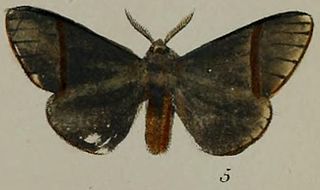
Epanaphe moloneyi is a species of Lepidoptera in the family of Notodontidae that is found in Africa.
Paxia is a genus of plants in the family Connaraceae, first described in 1891. It is native to west-central Africa.

The elm cultivar UlmusDensa was described from specimens growing near Ashkabad as U. densaLitv. in Schedae ad Herbarium Florae Rossicae (1908). Litvinov, reporting it growing wild in the mountains of Turkestan, Ferghana, and Aksu, as well as in cultivation, considered it a species, a view upheld by the Soviet publications Trees and Shrubs in the USSR (1951) and Flora of Armenia (1962), and by some current plant lists. Other authorities take it to be a form of U minor, distinctive only in its dense crown and upright branching.
The field elm cultivar 'Punctata' [:'spotted', the leaf] first appeared in the 1886-7 catalogue of Simon-Louis of Metz, France, as U. campestris punctata. It was distributed by the Späth nursery, Berlin, in the 1890s and early 1900s as U. campestris punctataSim.-Louis, the Späth catalogue listing it separately from U. campestris fol. argenteo-variegata and from U. campestris fol. argenteo-marginata. Green considered it possibly a synonym of the Field Elm cultivar 'Argenteo-Variegata'.
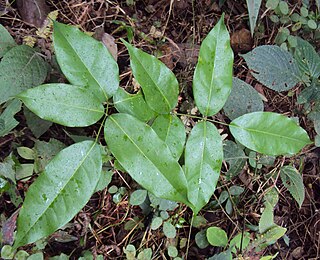
Rourea is a genus of plants from the family Connaraceae. Plants from this genus are found in Africa, Asia, Pacific, South and North America.
Catada vagalis is a moth of the family Erebidae first described by Francis Walker in 1858. It is found in India, Sri Lanka, Peninsular Malaysia, Borneo and the Philippines.

